
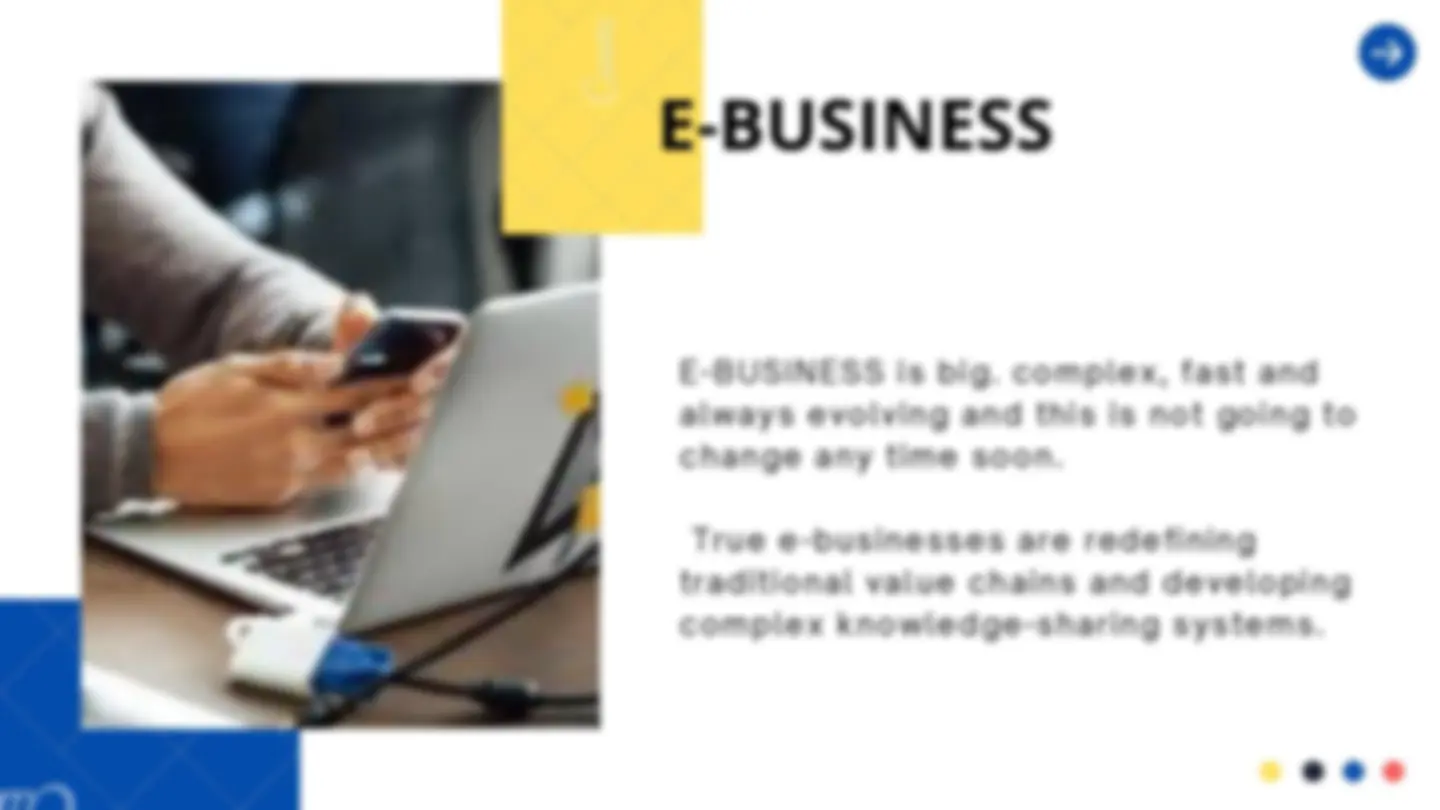
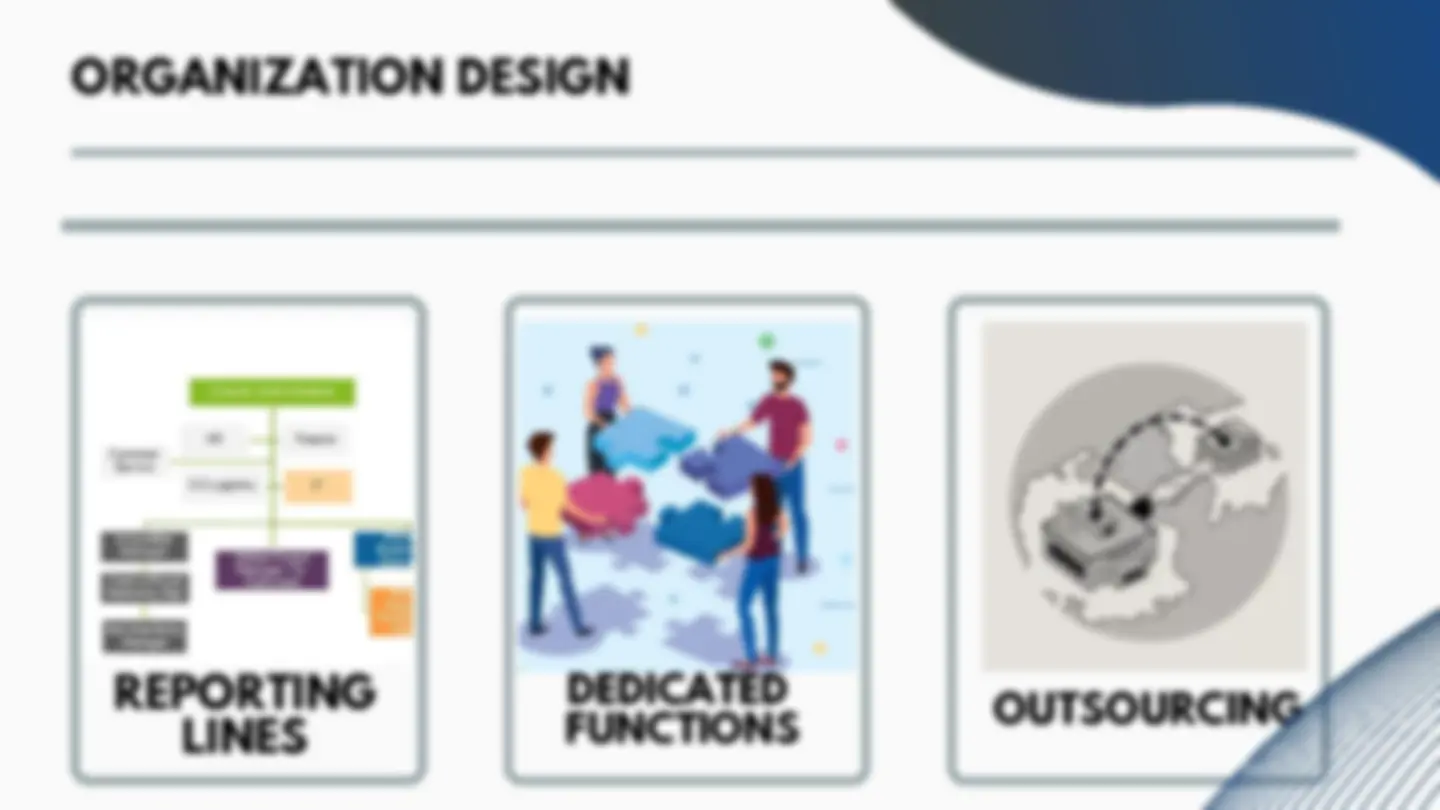
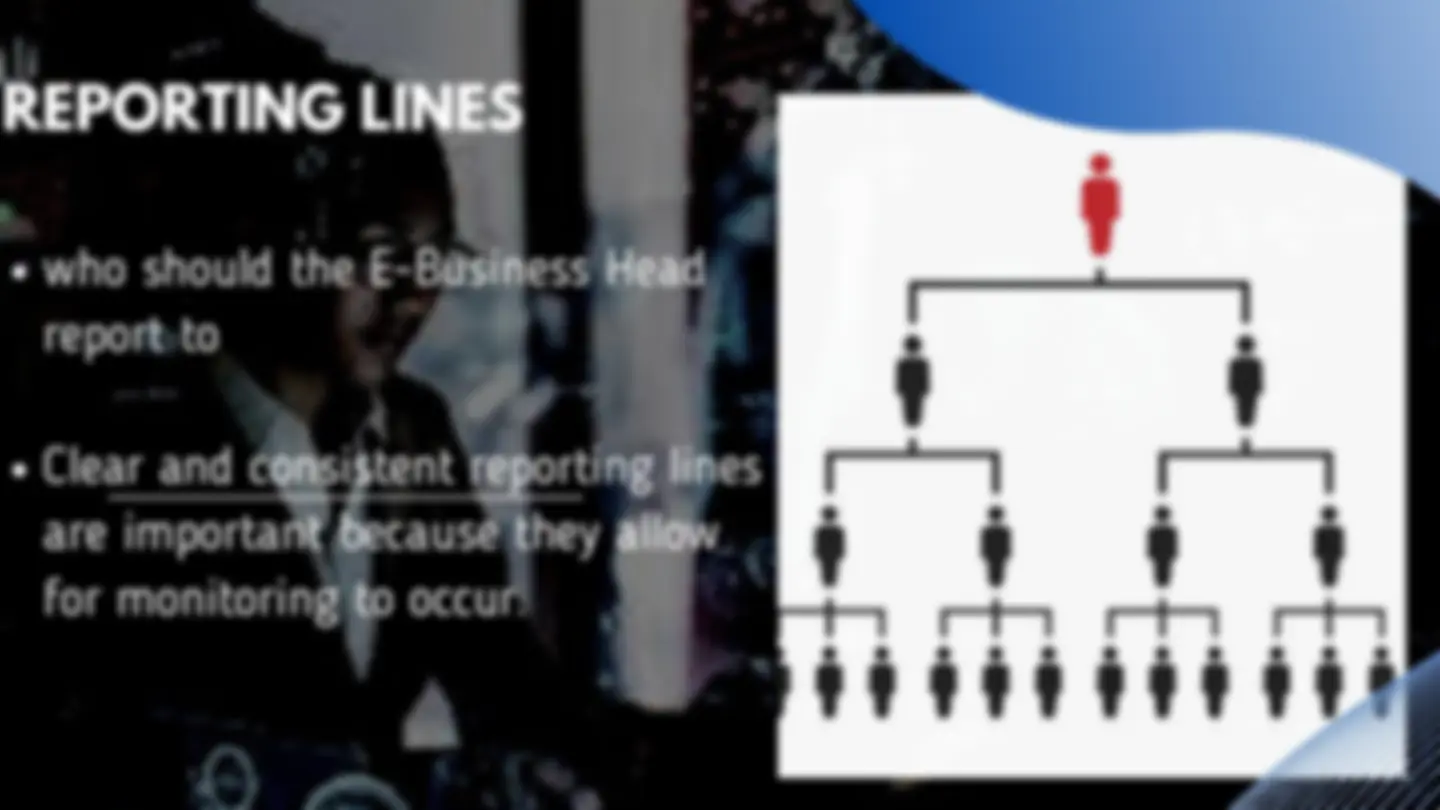
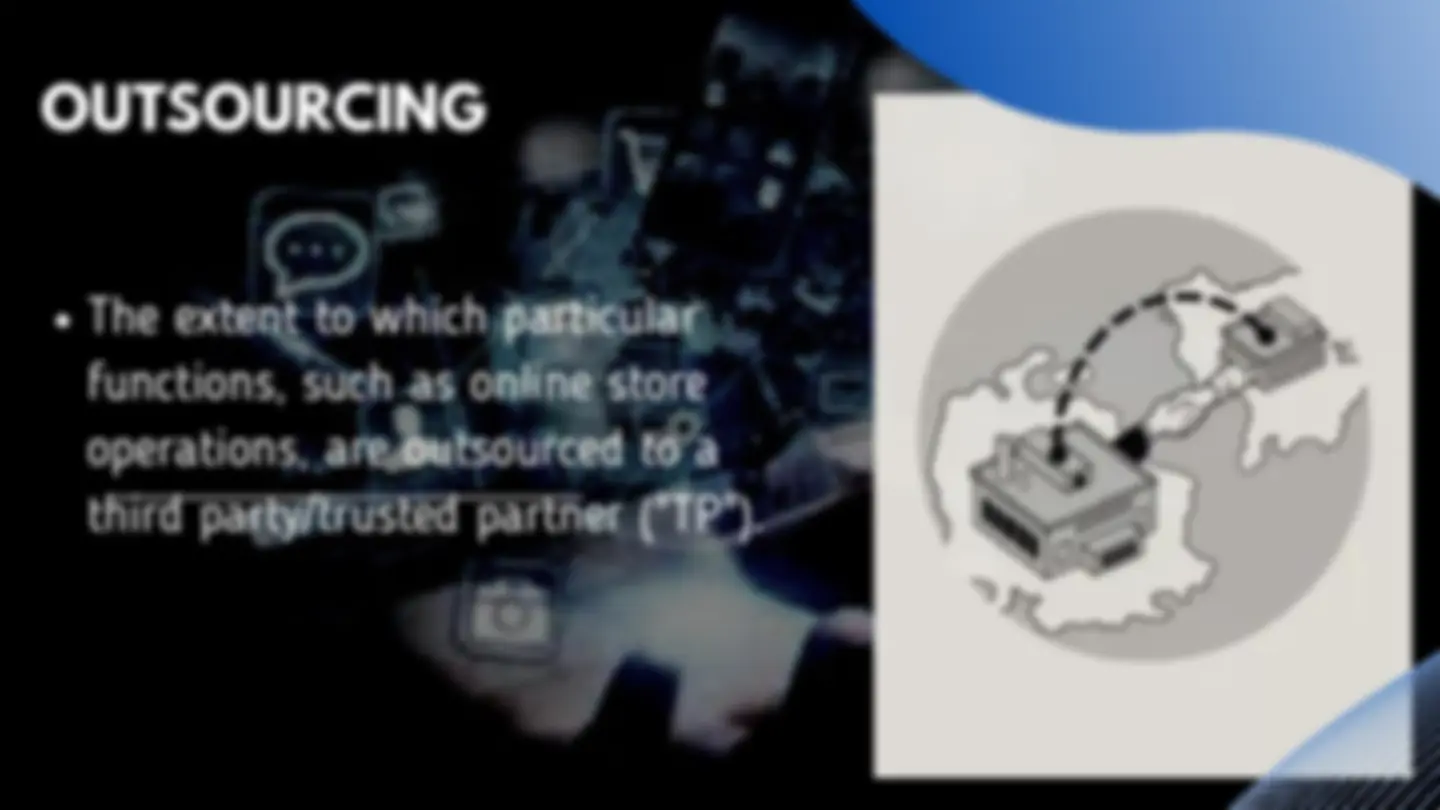
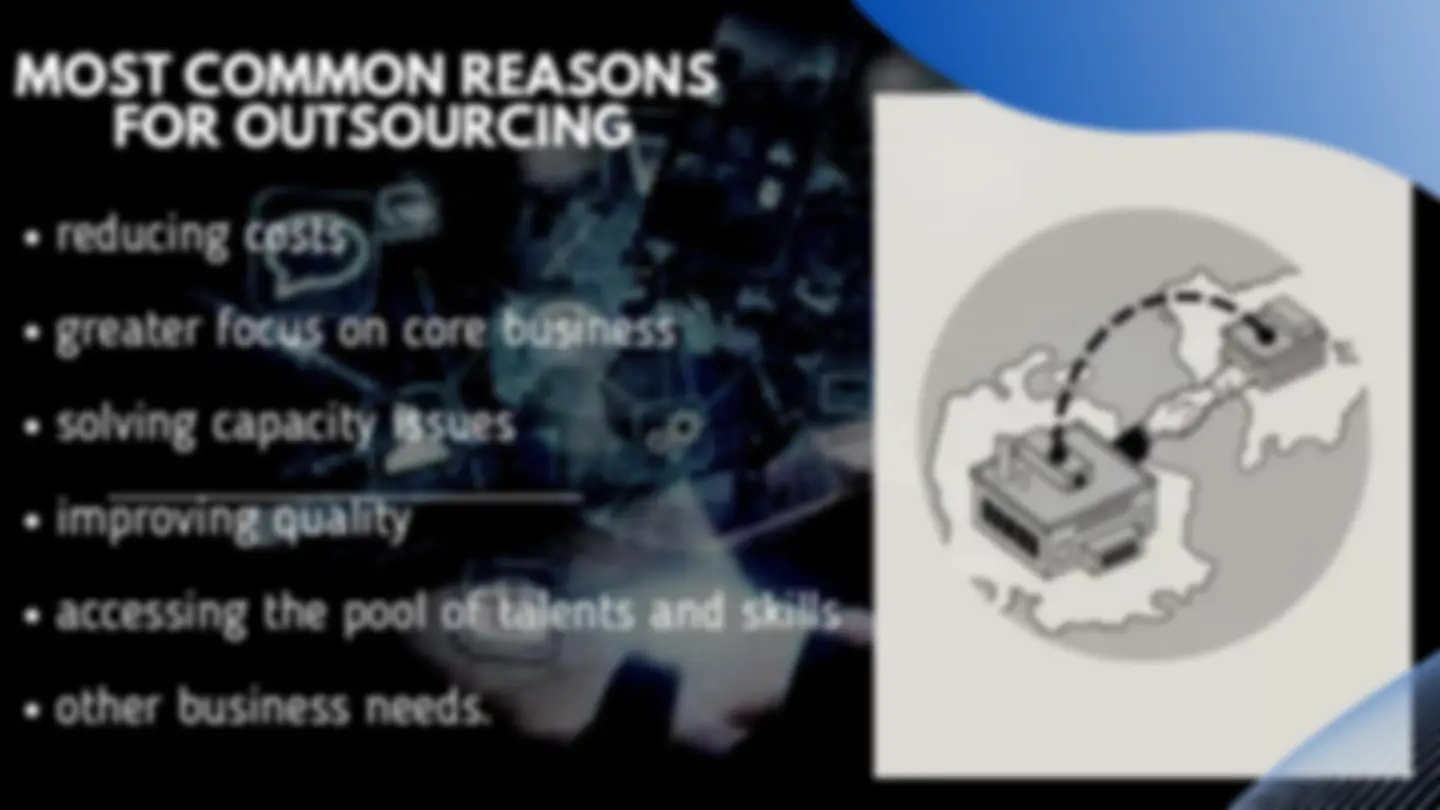
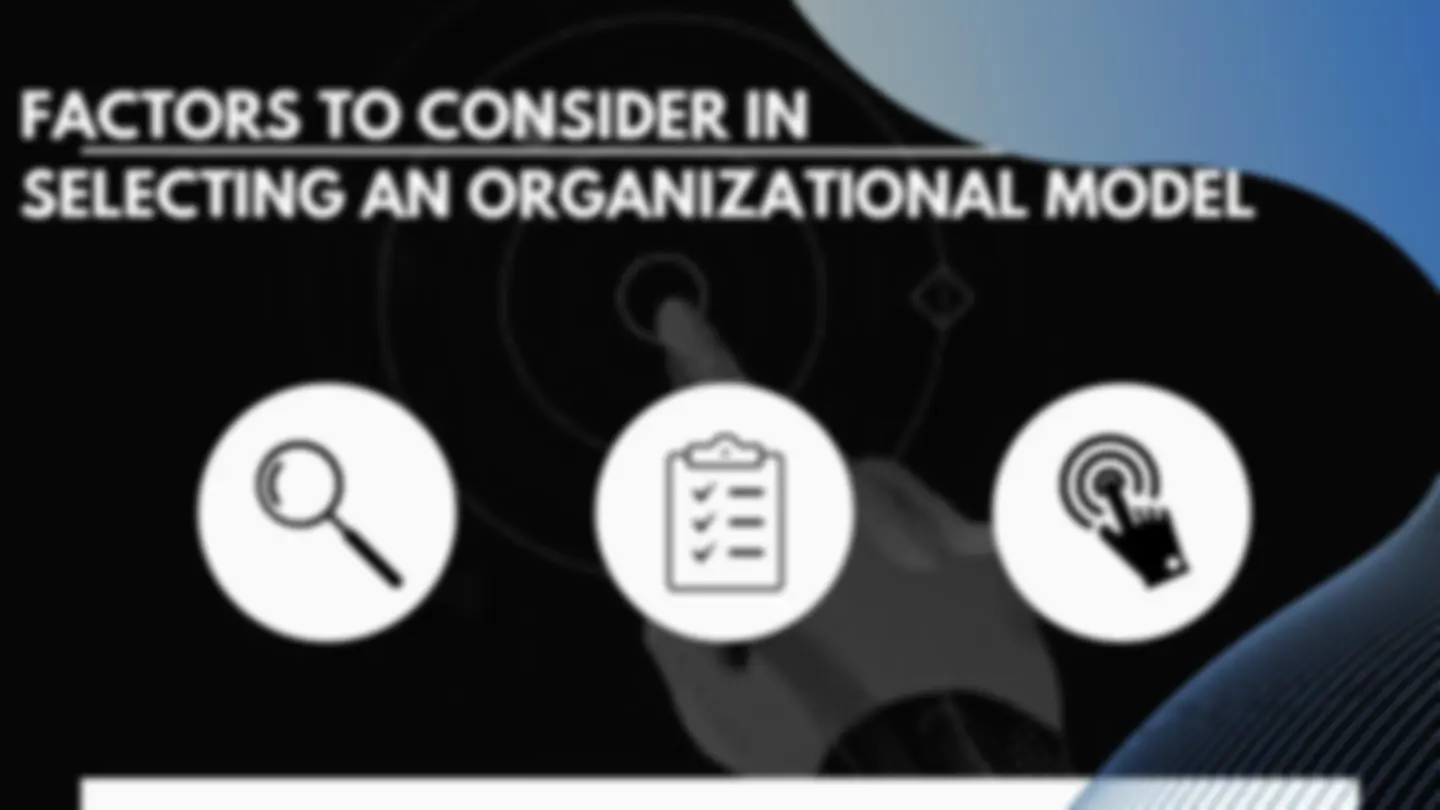
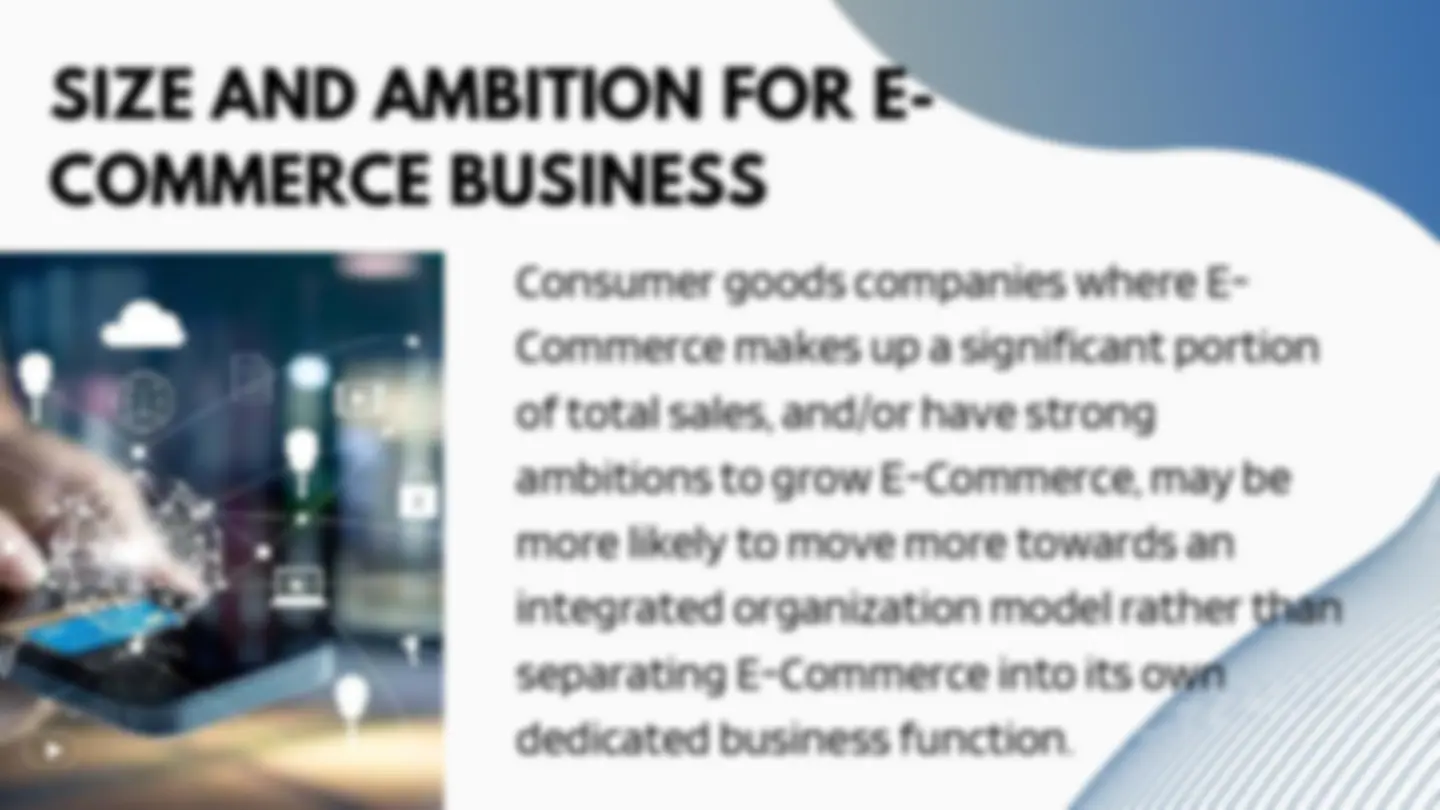
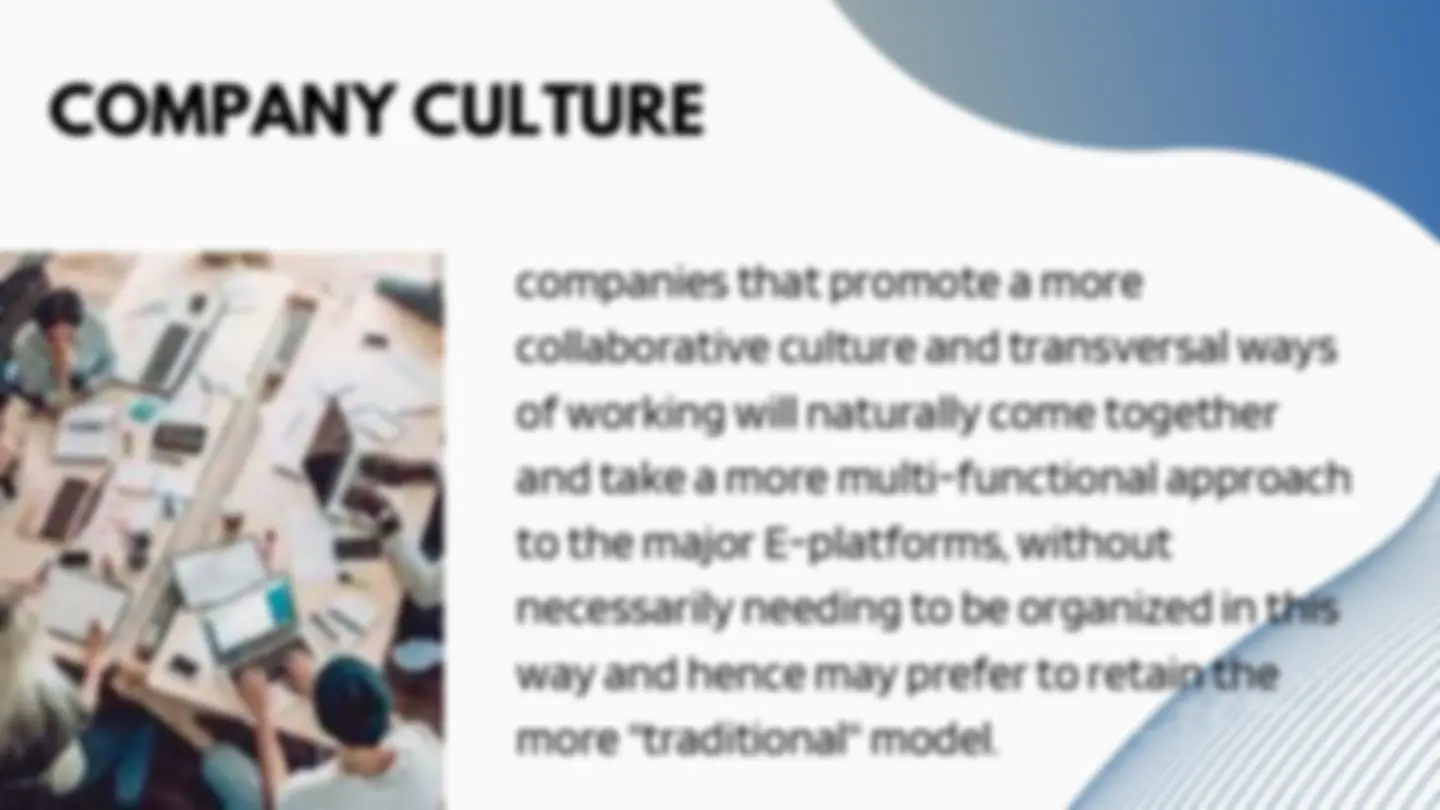
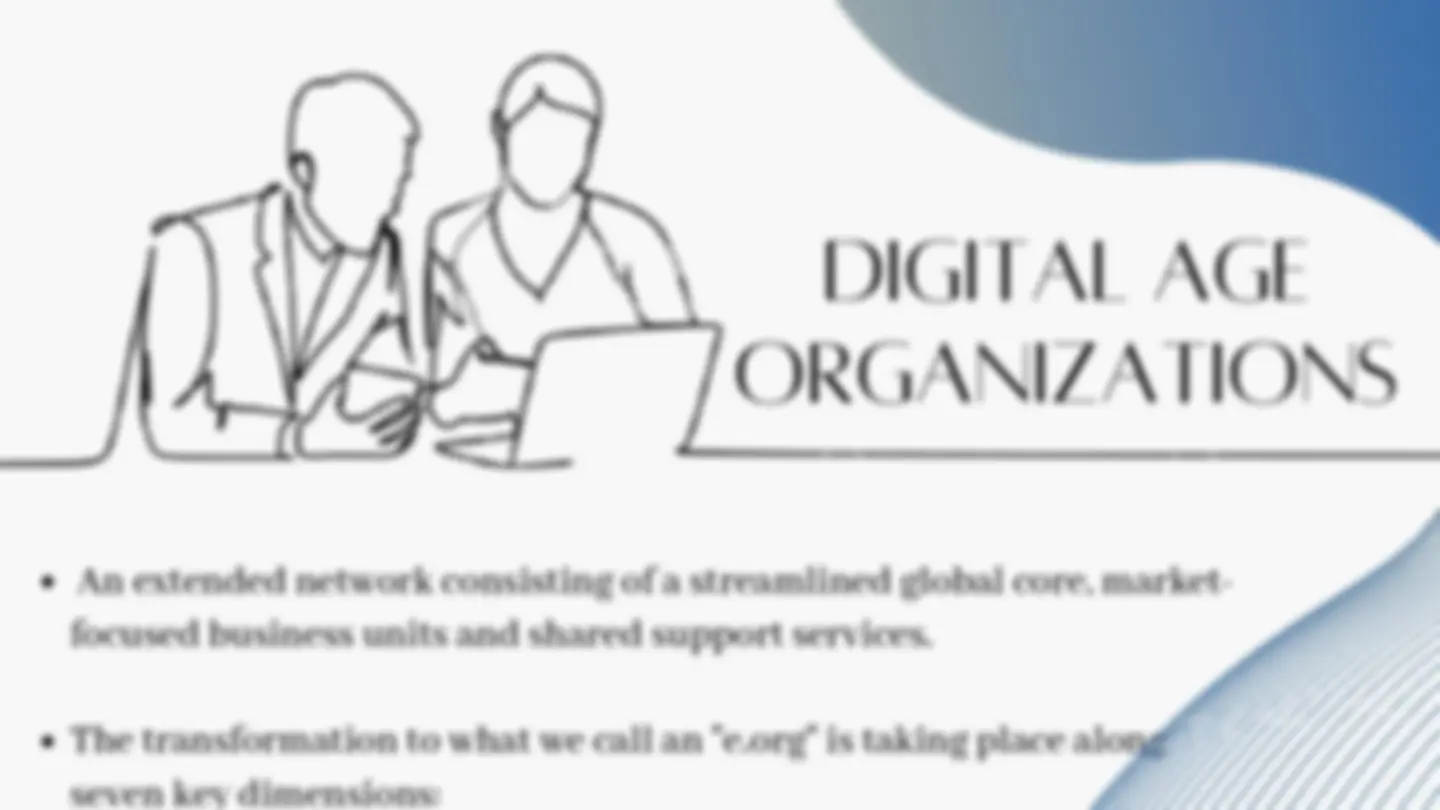
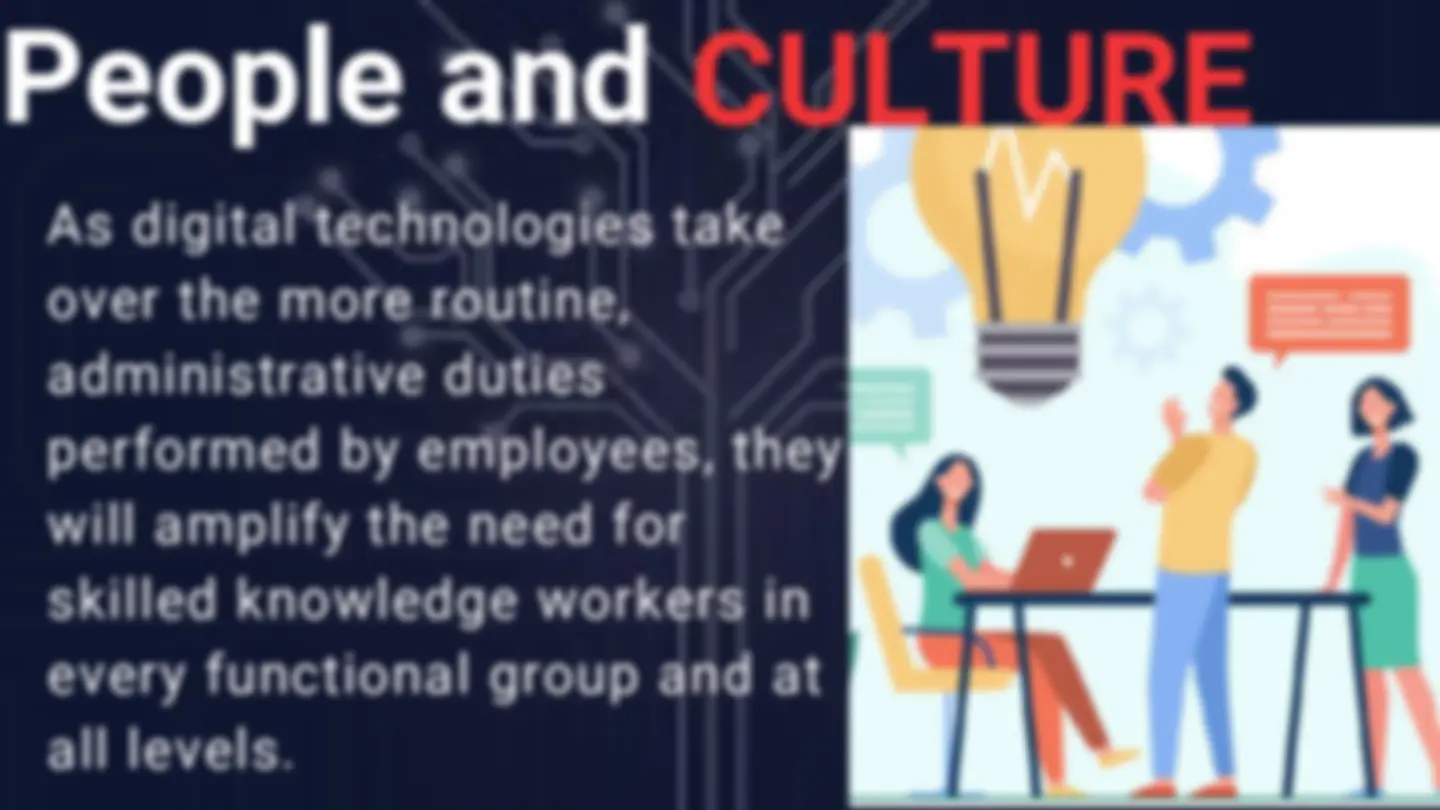
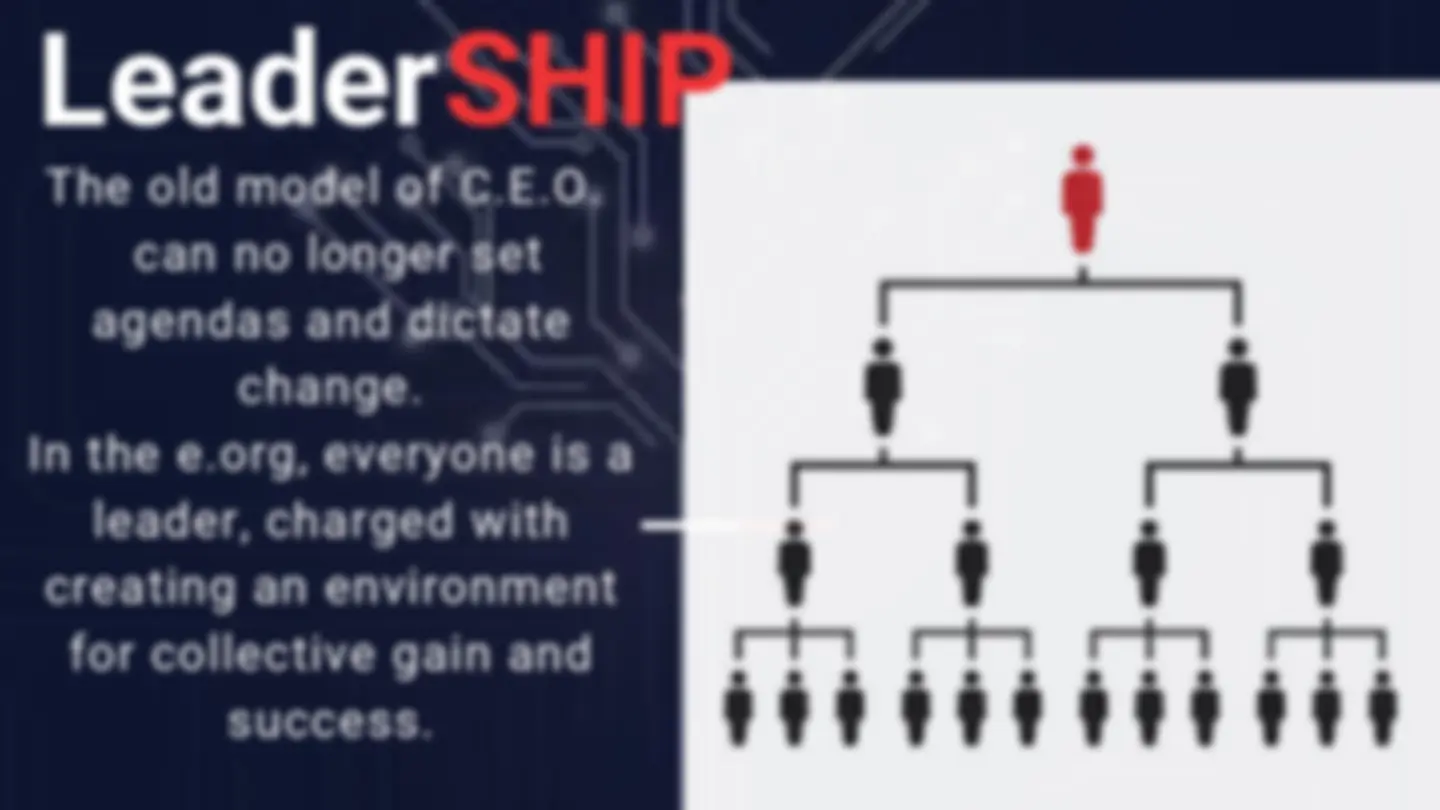
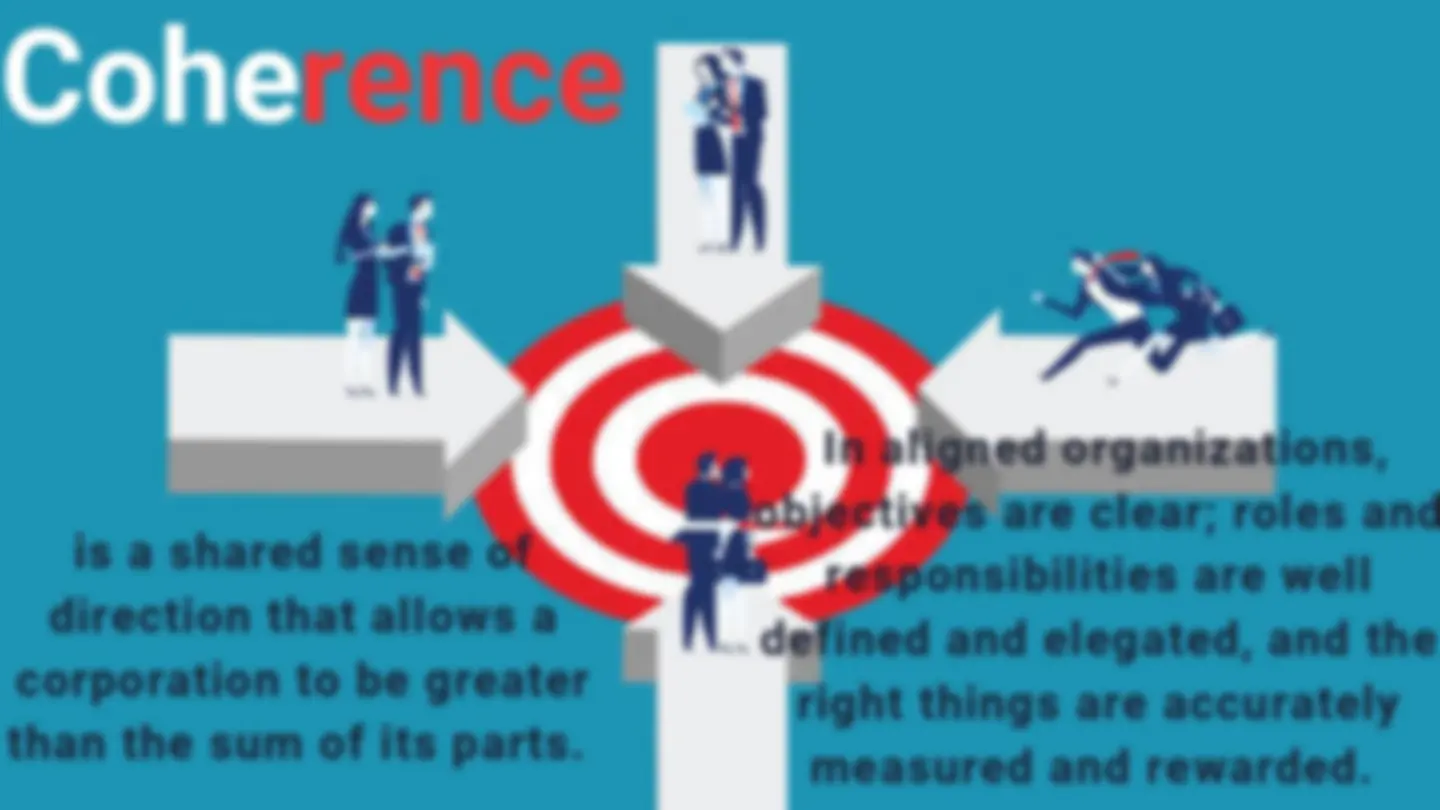
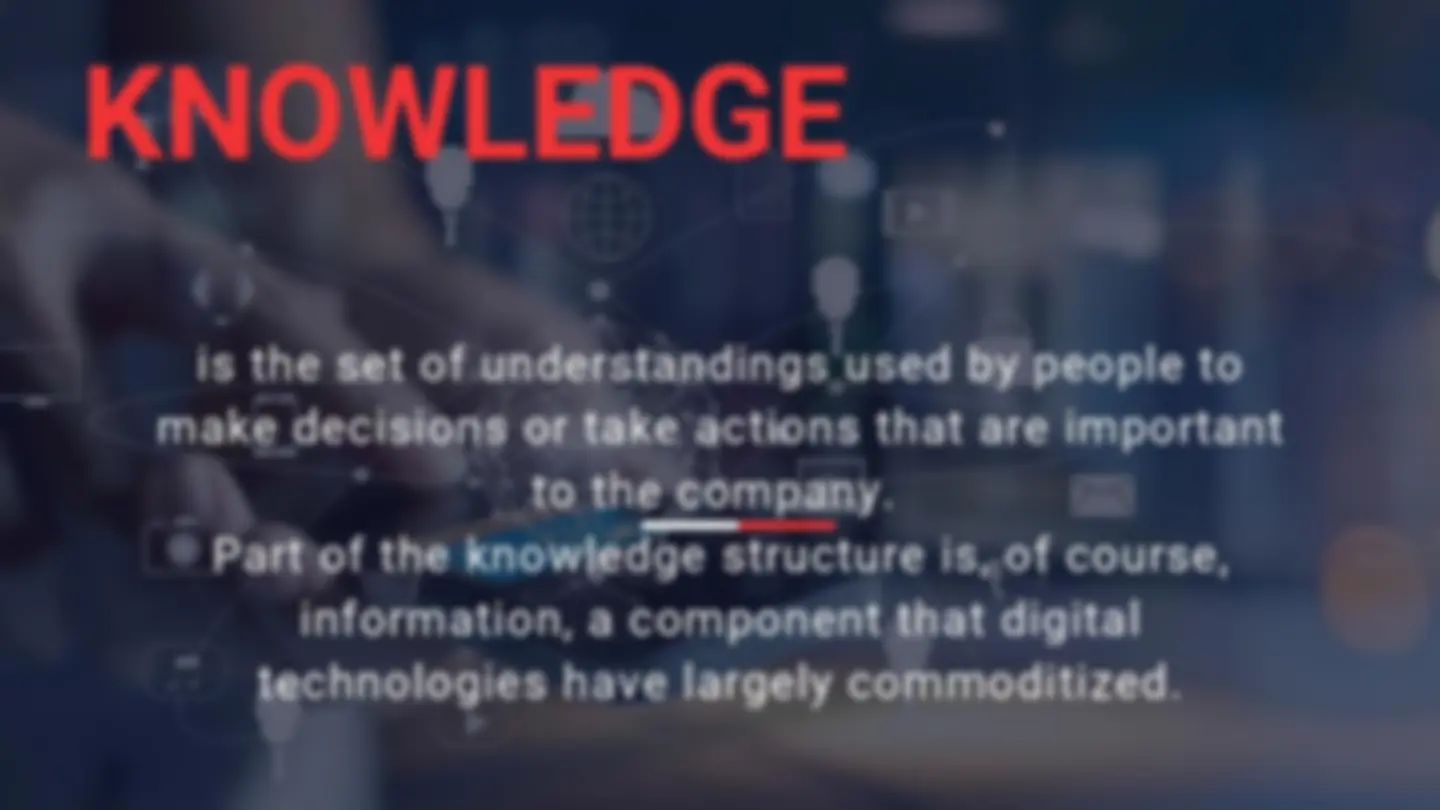
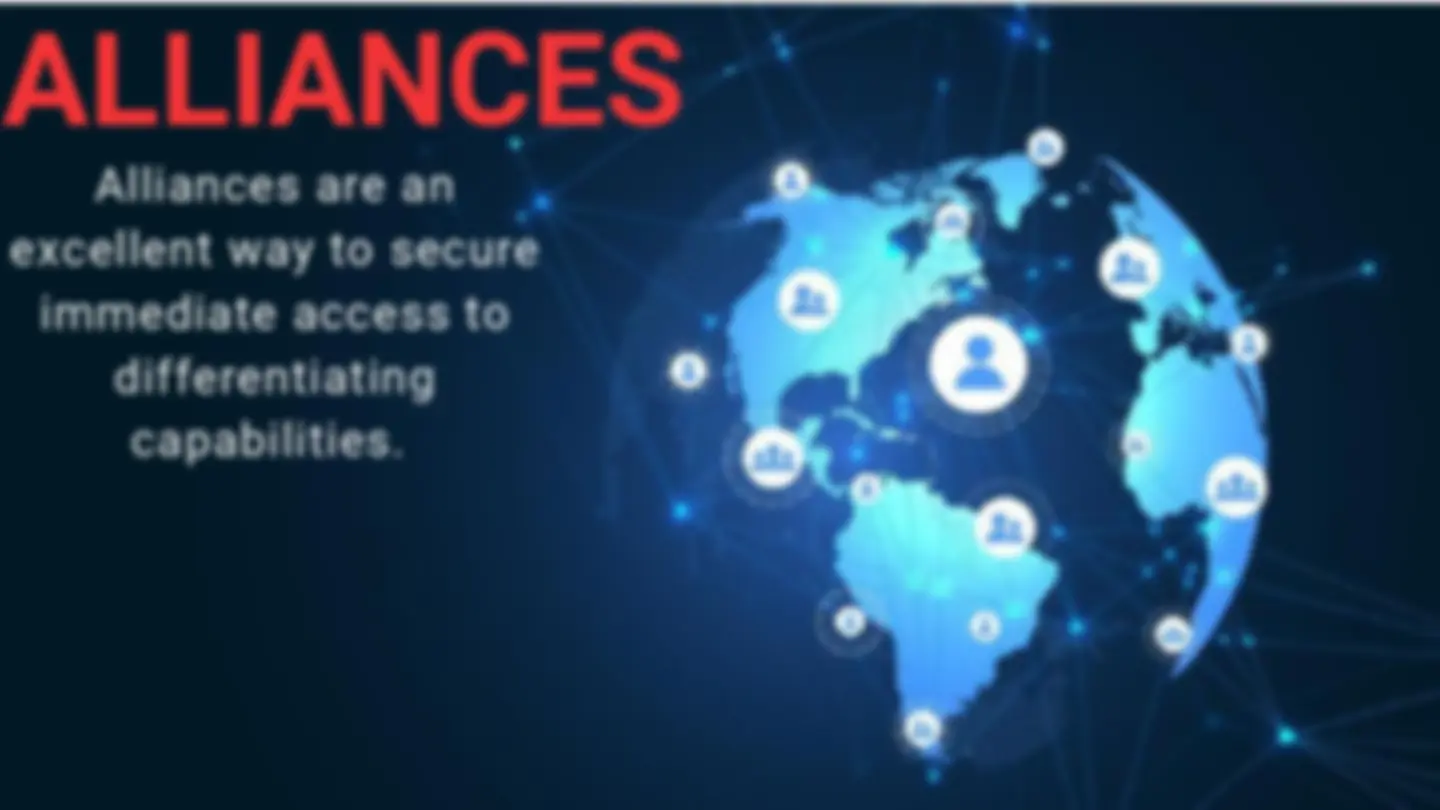
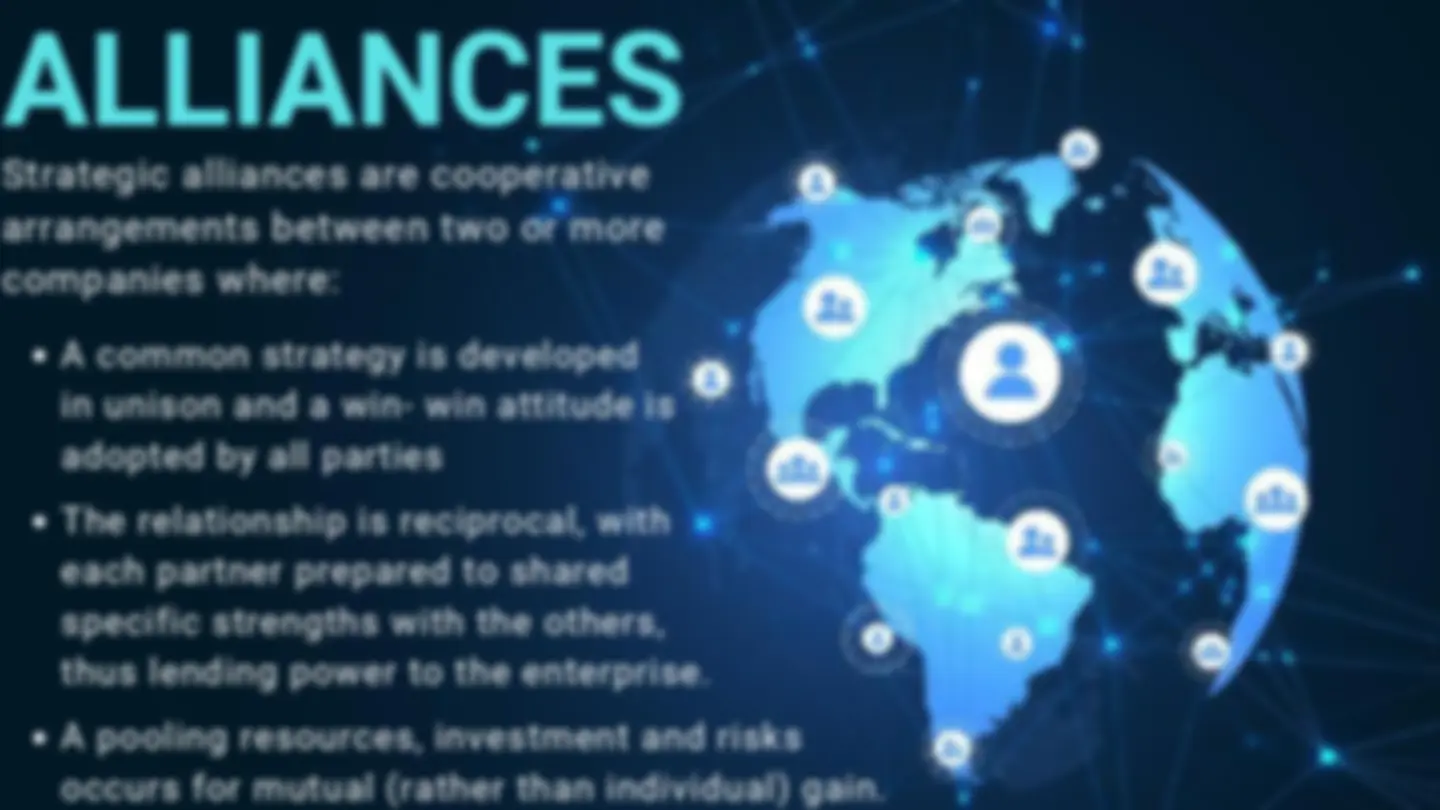
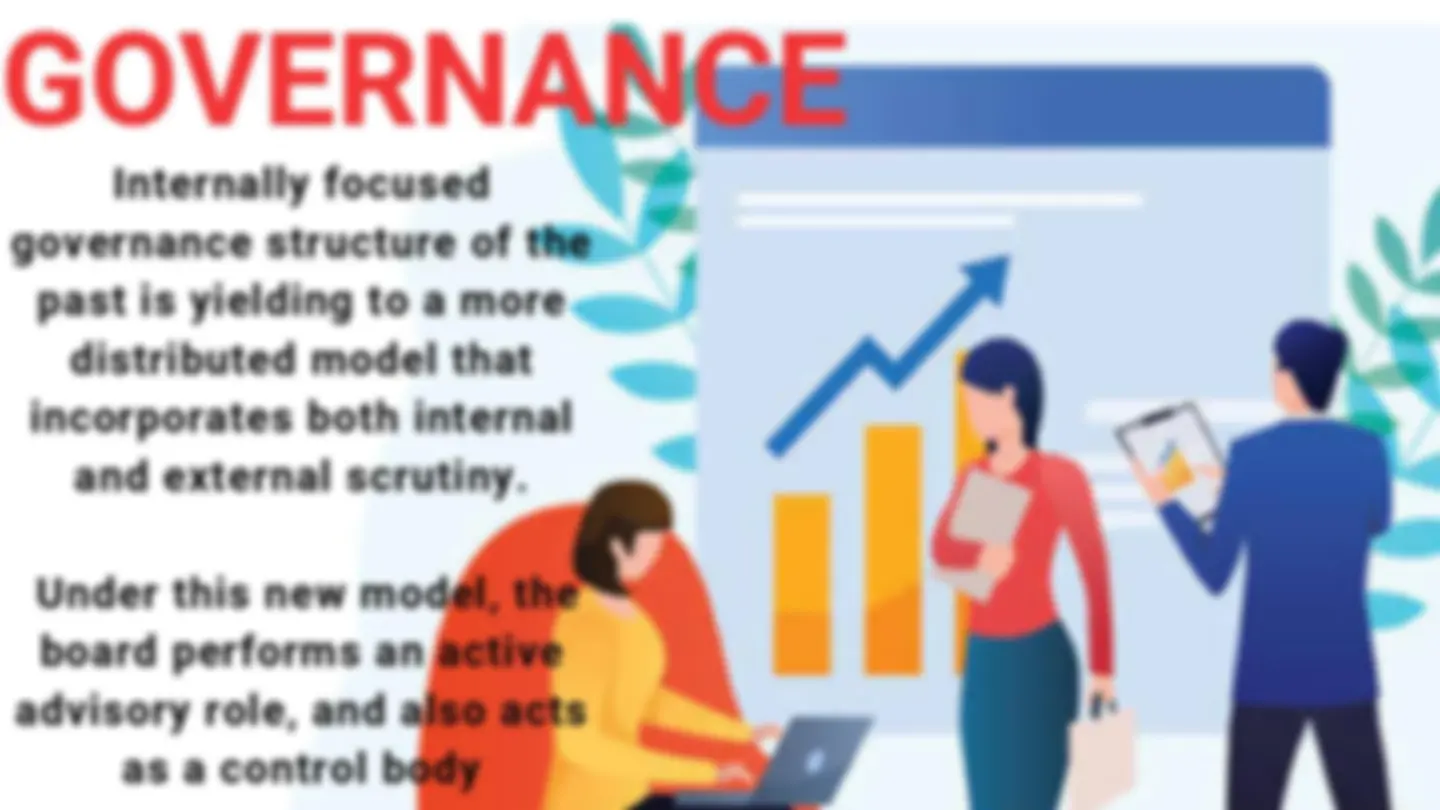
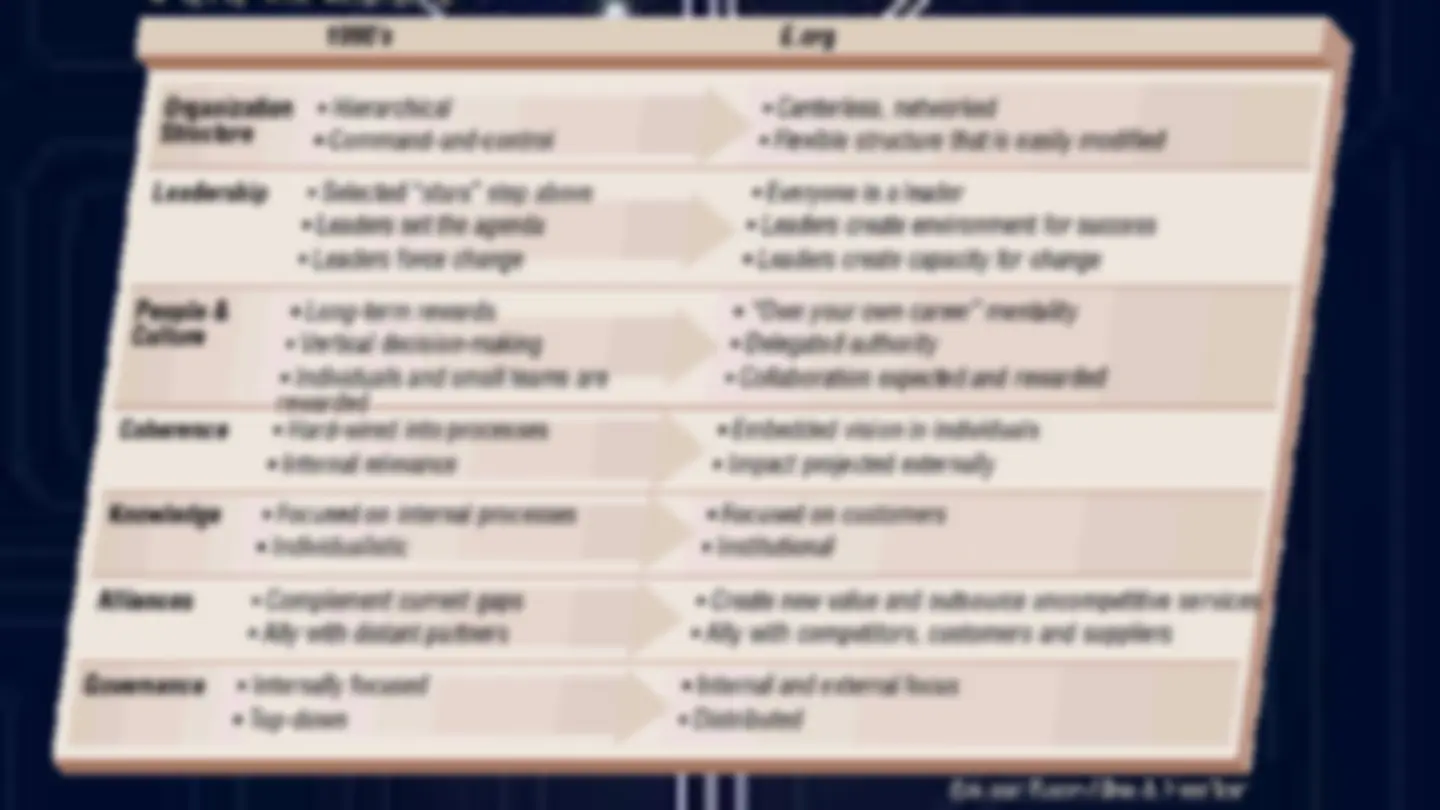



Study with the several resources on Docsity

Earn points by helping other students or get them with a premium plan


Prepare for your exams
Study with the several resources on Docsity

Earn points to download
Earn points by helping other students or get them with a premium plan
Community
Ask the community for help and clear up your study doubts
Discover the best universities in your country according to Docsity users
Free resources
Download our free guides on studying techniques, anxiety management strategies, and thesis advice from Docsity tutors
E-BUSINESS is big. complex, fast andalways evolving and this is not going tochange any time soon.True e-businesses are redefiningtraditional value chains and developingcomplex knowledge-sharing systems.
Typology: Slides
1 / 26

This page cannot be seen from the preview
Don't miss anything!



















Chapter VI Group 5
At the end of this chapter, the students should be able to:
Understand the organization design for e-business identify the factors in selecting an organizational model Differentiate traditional organization from e- business organization Describe the dimensions of e-organizations
OUTSOURCING ORGANIZATION DESIGN REPORTING LINES DEDICATED FUNCTIONS
who should the E-Business Head report to Clear and consistent reporting lines are important because they allow for monitoring to occur. REPORTING LINES
Defining roles and responsibilities within your business, permits you to more effectively manage your entire business. DEDICATED FUNCTIONS
The extent to which particular functions, such as online store operations, are outsourced to a third party/trusted partner ("TP"). OUTSOURCING
FACTORS TO CONSIDER IN SELECTING AN ORGANIZATIONAL MODEL
COMPLEXITY OF BUSINESS the number of categories a consumer goods company plays in, and extent to which it operates across the consumer segments will significantly influence the choice of organizational model.
Consumer goods companies where E- Commerce makes up a significant portion of total sales, and/or have strong ambitions to grow E-Commerce, may be more likely to move more towards an integrated organization model rather than separating E-Commerce into its own dedicated business function. SIZE AND AMBITION FOR E- COMMERCE BUSINESS
companies that promote a more collaborative culture and transversal ways of working will naturally come together and take a more multi-functional approach to the major E-platforms, without necessarily needing to be organized in this way and hence may prefer to retain the more "traditional" model. COMPANY CULTURE
DIMENSIONS OF E-BUSINESS ORGANIZATION Organization Structure Leadership People & Culture Coherence Knowledge Alliances Governance
STRUCTURE
E-business companies should form more flexible, decentralized, team - and alliance-based organizations that enable employees to respond immediately to opportunities and competitive advantages around the globe.
is a shared sense of direction that allows a corporation to be greater than the sum of its parts. In aligned organizations, objectives are clear; roles and responsibilities are well defined and elegated, and the right things are accurately measured and rewarded.